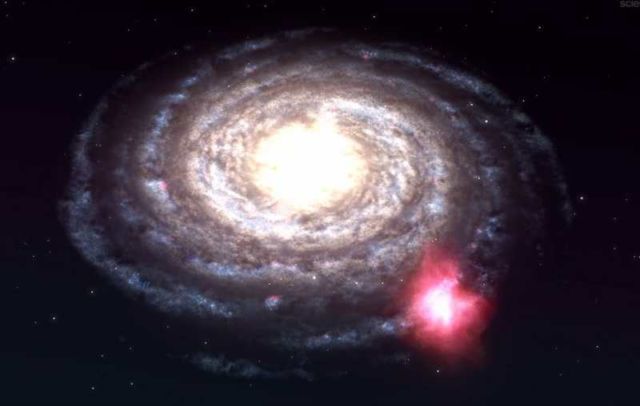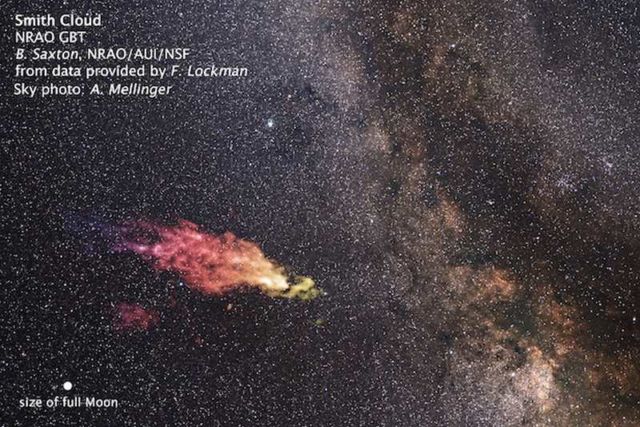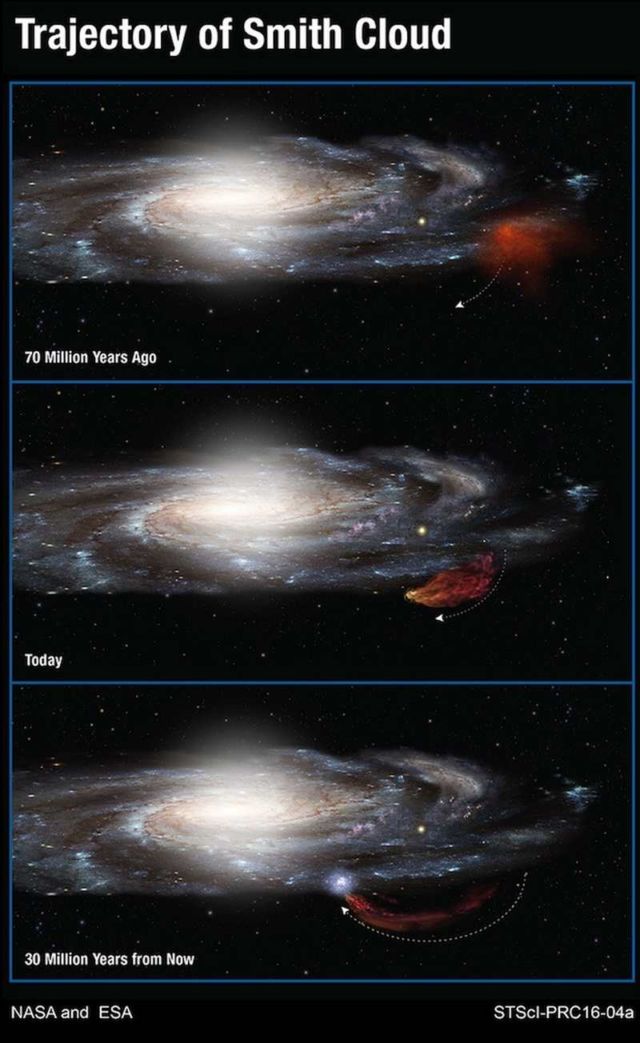30 million years from now, a massive cloud of gas will collide with the Milky Way.
Astronomers are studying the incoming Smith cloud, named after Dutch astronomer Gail Smith who discovered it. Smith’s cloud contained enough gas to make 2 million stars the size of our sun, and it was moving through space at 700,000 mph.
According to AccuWeather: “It contains enough gas to produce 2 million stars. It is one of many high velocity clouds orbiting the Milky Way. The impact will compress the gasses enough to trigger a spike in star formation.”
Because of the cloud’s large abundance of sulfur and the large amounts of sulfur on Milky Way’s outer disc, that it originated from our galaxy.
Andrew Fox of the Space Telescope Science Institute says, “We don’t fully understand the Smith Cloud’s origin. There are two leading theories. One is that it was blown out of the Milky Way, perhaps by a cluster of supernova explosions. The other is that the Smith Cloud is an extragalactic object that has been captured by the Milky Way.”
This diagram shows the 100-million-year-long trajectory of the Smith Cloud as it arcs out of the plane of our Milky Way galaxy and then returns like a boomerang. Image Credit: NASA/ESA/A. Feild (STScI)
source NASA








Leave A Comment